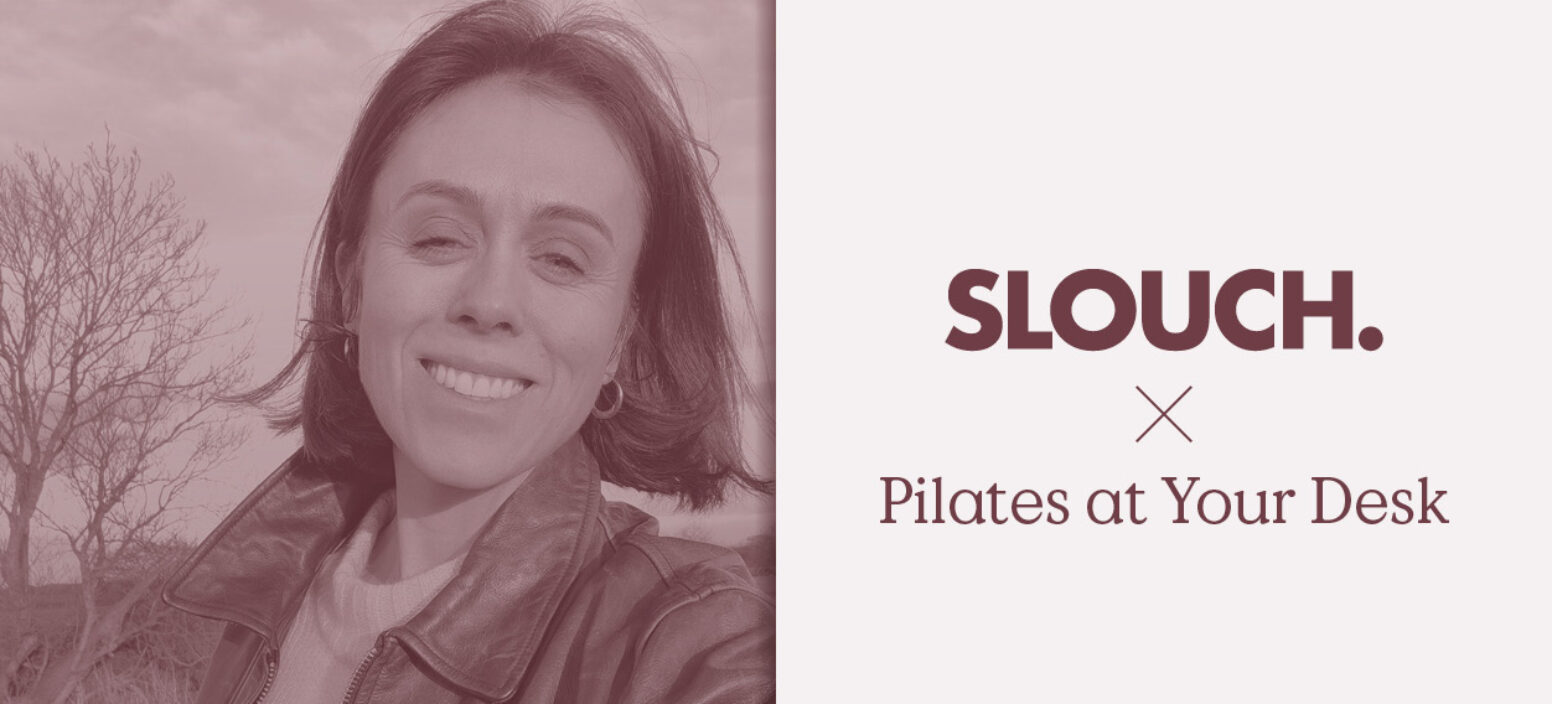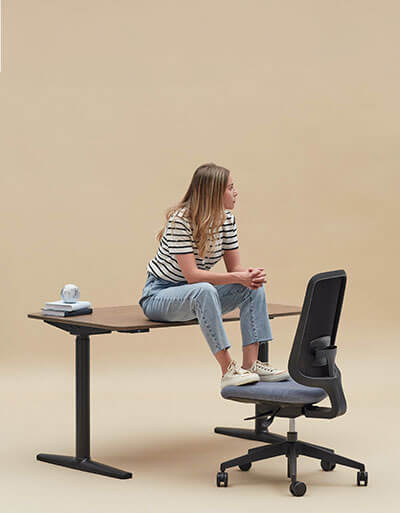At Slouch, we recognise that comfort is key – especially when you’re spending long hours at your desk. That’s why we sat down with the founder of Pilates at Your Desk to explore how simple, feel-good movements can bring energy and ease into your workday. With a background in behavioural economics and a mission to make movement easy and enjoyable for everyone, she shares smart, practical tips for staying healthy – even when you’re working all day.
What are your top tips for someone wanting to implement healthy habits into their lifestyle?
Start tiny and take an incremental approach. Before teaching movement I worked as an economist and I was fascinated by what actually helps people change. Behavioural economics shows us that small steps beat big plans every time. So I always suggest starting with a movement snack. Just a few minutes is enough.
If you want it to stick, make it easy. Pair it with something you already do like boiling the kettle or finishing a meeting. That way, it becomes part of your day without needing extra willpower.
And be nice to yourself about it. Celebrate the wins, however small they seem. If you miss a day, no guilt spirals. Guilt doesn’t fuel good habits, but kindness and consistency do.
What inspires you to stay motivated?
Moving makes me feel good. I mean really good. Lighter, clearer, more me. It makes me a happier person too. And I love sharing this – the joy of movement!
What really keeps me going is the people I work with. When someone starts to feel better in their body, you can see the change in their whole being. It’s incredible.
That exchange of energy and learning goes both ways. I’m inspired by them all the time. And creatively, movement is my thinking tool. I move to unlock ideas. That and rest.
How do you create a daily routine that supports both your creativity and wellbeing?
I design my day with the same care I use to design a good movement habit. Thoughtful, flexible, and with fun thrown in.
Sleep comes first. I go to bed early so I can start my day early. First thing I do is move a little. Gently. Like a cat stretching after a nap. It helps my brain and body ease into the day.
Then I weave movement through the day like punctuation. Not saved for a workout. Just regular resets. A stretch here. A walk there. Little check-ins that help me stay focused and feel more like myself.
And if my energy dips, I try to listen. I used to power through everything. But after a few rounds of burnout, I’ve learned to rest when I need to.
Also, joy is essential. Laughs with my family, moves that make me smile, ten-minute walks outside. My teaching is full of this too. Joy is a powerful driver of habit.
What is the biggest misconception people have about Pilates, especially in a desk-based context?
That it’s all about the core. And yes, it includes your centre, but Pilates is really about principles. Awareness, flow, balance.
Over time I’ve stepped beyond Pilates in its purest sense because I want to meet people where they are. Sometimes that means teaching desk moves, standing wiggles or dance breaks. Whatever works. It’s about expanding your movement potential and embracing it, rather than staying wedded to – and confined to – the space of a mat or reformer. That’s for me and the people who want to learn from me, anyways.
On this, I don’t believe movement should be stuck on a mat. You can and should move anywhere and everywhere (not when you’re sleeping perhaps, lol) If the only time you move is on a mat, you probably won’t move very much. I want people to feel they can move anywhere. Especially while they work.
I’m changing my brand actually from Pilates At Your Desk to Move At Your Desk. It’s where I am at now and I think it’s more accessible.
How do you help people stick with regular movement habits, especially when work gets busy?
I show them that movement helps work, it doesn’t take away from it. Even two or three minutes can help you focus, ease tension and think more clearly.
And I lean into what I know from behavioural science. When something feels hard or takes too long, it falls off the to-do list. So I help people lower the friction. We make it short, simple and satisfying.
Movement becomes a tool, not a task. Not another box to tick but a way to tick other boxes better.
Was there a personal moment when you realised how much people need to move more during the workday?
Definitely. As I say above, I used to work as an economist, mostly sitting at a desk for hours. I had all the classic desk issues. Sore neck. Tight hips. Constant tiredness.
When I started seeing clients with the same challenges, I began giving them little movement snacks to try at work. Some didn’t bother. But the ones who did? The difference was amazing. One person told me their daily headaches disappeared.
That’s when everything clicked. Behavioural economics explains a lot of this. People want to move more, but the environment makes it hard to act on that intention.
It’s not a motivation problem. It’s a design problem. So I started creating small, well-timed nudges that make movement easy and inviting. And that’s how my Move At Your Desk membership was born actually.
I’ve seen hundreds, maybe thousands, of people over the years in workplaces and as individuals too. The feedback is always the same: that movement makes them feel better and that positive energy is infectious. So that’s what I want to do: spread this joyful movement malarkey!

